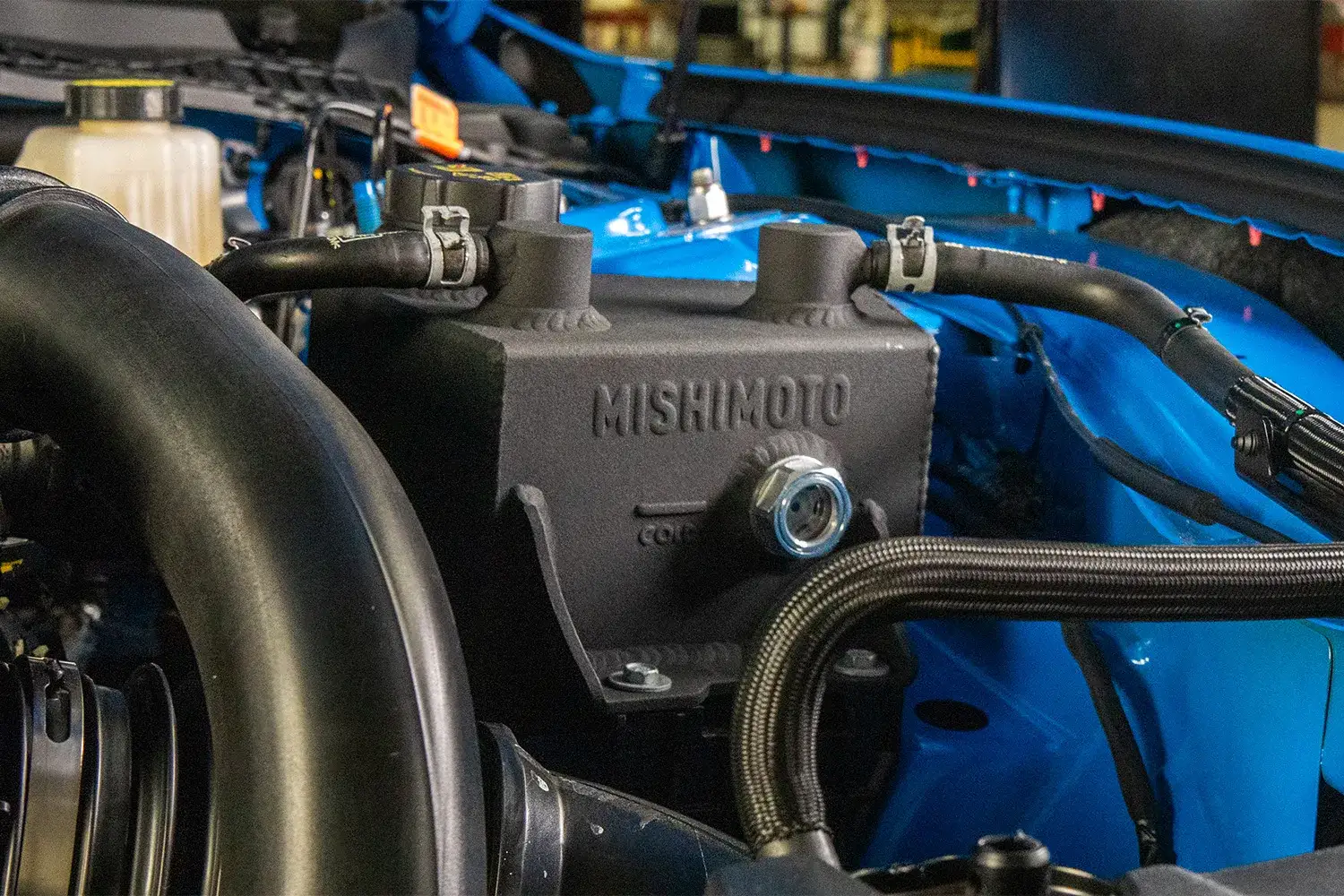
Speed Evolved - Performance Intake Kit R&D, Part 4 - Testing Results
PERFORMANCE INTAKE, FITS TOYOTA GR SUPRA 3.0L 2020+
While it may have seemed like millions of years since this project began, in only a few short months, our Supra intake's evolution is nearing completion. We've watched it dig its way out of the ocean on to dry land and sprout legs, but now is the time to see if it can breathe out of the water.
Testing intake kits is a multistep process here at Mishimoto. There's more to an intake kit than just a dyno run and pulling the best result from a series of power pulls. For starters, the Supra's ECU is going to adjust to compensate for a difference in air pressure, so a 20hp gain might only happen once, but we'll dig into that further down. What we want to cover first is the importance of flow and reducing restriction in the intake system.

Ideally, we want to make sure that the path from the filter to the engine to be as smooth and free-flowing as possible. This would allow for a greater volume of air to enter the engine resulting in more power. Increasing volumetric efficiency by 100% is impossible, but every little bit counts when it comes to improving airflow. We're hoping to squeeze out as much as we can through our tweaks to the Supra's intake design. For an overview of how our design improves flow, make sure to check out the previous two posts in this series.
To test our improvements, we start our intake testing on our flow bench. This device can either push or pull precise volumes of air, measured in cubic feet per minute, or CFM, through the intake kit, which allows for an accurate comparison between the stock kit and our design. Ye, our engineer, placed an array of sensors throughout each kit to pinpoint the areas that pose the most restriction and generate an overall flow reading. Since the amount of air flowing through this kit will vary as you drive the car, Ye blasted 200, 400, and 600 of air CFM through each kit to simulate the vehicle's full powerband. From this test, we determined that we were able to reduce the intake system's restriction by 17%, helping the Supra breathe deeper.


With the flow testing complete, it's time to see how well the kit performs with an actual engine attached to it, so we loaded our Supra on to our Dynapack system for a round of torture testing. We wanted to ensure that our testing not only simulates the harshest of driving conditions but also delivers an accurate portrayal of the kit's performance. Instead of cherry-picking a few of the best results, we run a series of power pulls to collect a large enough sample size for a more accurate average between the pulls. Here are the power figures we saw in the comparison test between our kit and the stock unit.

At first glance, it might not seem very impressive, but the Supra's speed density tuning is coming into play here. With a MAF-based fueling system, slight adjustments to the MAF sensor housing can trick the vehicle into delivering additional fuel and increasing power. With a MAP-based fueling system, it's trickier for an intake to have the same effect. Due to the operation of this particular style of fuel management, as overviewed in the first part of this series, the ECU detected airflow change in the manifold absolute pressure (MAP) sensor and adjusted the fuel delivery to compensate, resulting in the same power figures between both kits. That said, an upgraded intake is not useless on this vehicle. With more aggressive tunes or bigger turbos, our intake will provide a better platform for flow and enable those modifications to reach their full potential.
Flow isn't the only factor at play when it comes to speed density. Intake air temperature also affects how the ECU calculates fuel mixture. Cold air is denser and less prone to inciting detonation, so the ECU can inject more fuel and utilize more aggressive ignition timing. Conversely, hot air is less dense, so the ECU can't inject as much fuel, and the ECU must pull timing to avoid knock. To ensure that our kit provided adequate protection from the engine bay's heat, we tested our kit both with and without the heat shielding. With the heat shielding installed, we noted a 4°F reduction in intake air temperatures.

Helping the MKV Supra breathe deeper is just one step in its evolutionary process. Since it's the poster child for the tuner culture, it's only a matter of time before bigger turbos, and better tunes find their way onto the B58. Our new intake is designed to give the A90 the potential to go further in its tuning evolution, and is available now:
PERFORMANCE INTAKE, FITS TOYOTA GR SUPRA 3.0L 2020+

Thanks for Reading!
-Nick












